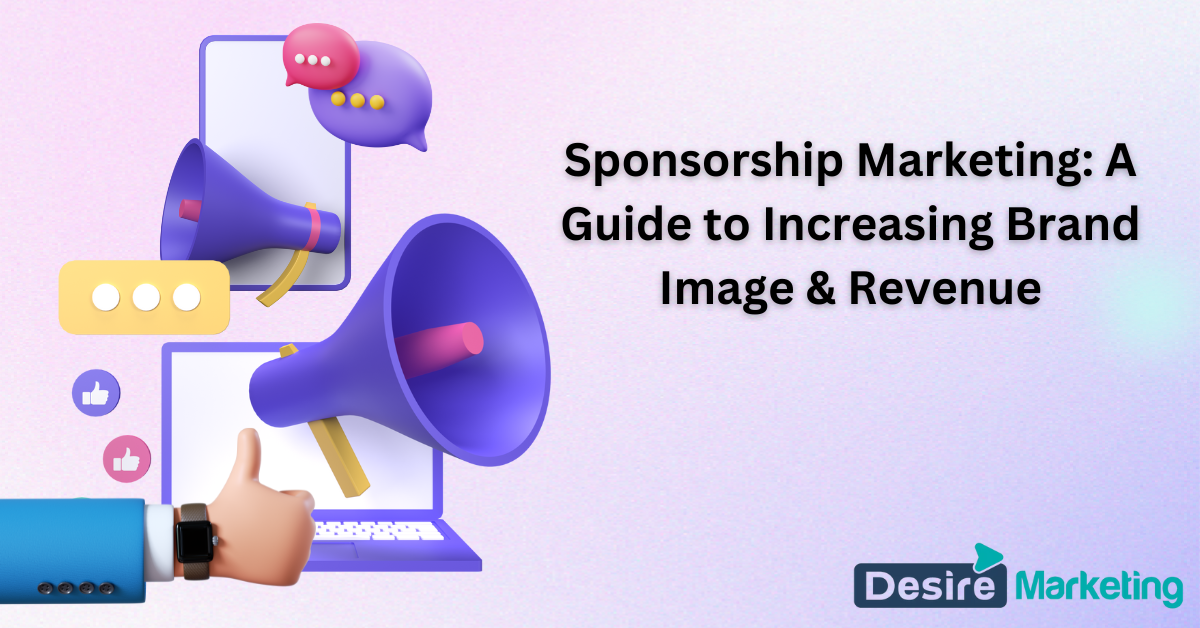Sponsorship marketing involves partnering with an event, activity, sports team, or organization to help promote your brand. It offers the opportunity to connect with targeted audiences to increase visibility, trust, and sales.
When another brand hosts an experience aligned with your customers and markets, you can use financial or in-kind resources to become a sponsor supporting them. In return, you gain valuable brand exposure through things like logo placement, custom promotional activations, advertising spots, speaking opportunities, and more.
For example, an athletic apparel company may sponsor major sporting events to showcase new products to fans in the venue and viewers at home. A tech company may sponsor conferences and trade shows relevant to their industry. A clothing brand might sponsor fashion shows or pop-up events to showcase their latest collections like jackets, tailored suits etc. to a live audience and online viewers.
Or a local restaurant may sponsor community fundraisers and 5Ks. The possibilities for strategic alignments to help both sponsors and event organizers achieve key objectives are nearly endless.
Compared to disruptive traditional advertising, sponsorship marketing positions your brand as an engaged partner rather than a relentless promoter. You build positive awareness by creating value versus constant plugging.
As a unique way to reach your target audiences while improving brand perception, sponsorships can powerfully boost marketing ROI across industries when executed thoughtfully.
This guide will explore what sponsorship marketing involves, what forms it can take, uncover key benefits for your business, as well as how to research and activate sponsorships opportunities to hit your KPIs.
Let’s dive in!
What is Sponsorship Marketing
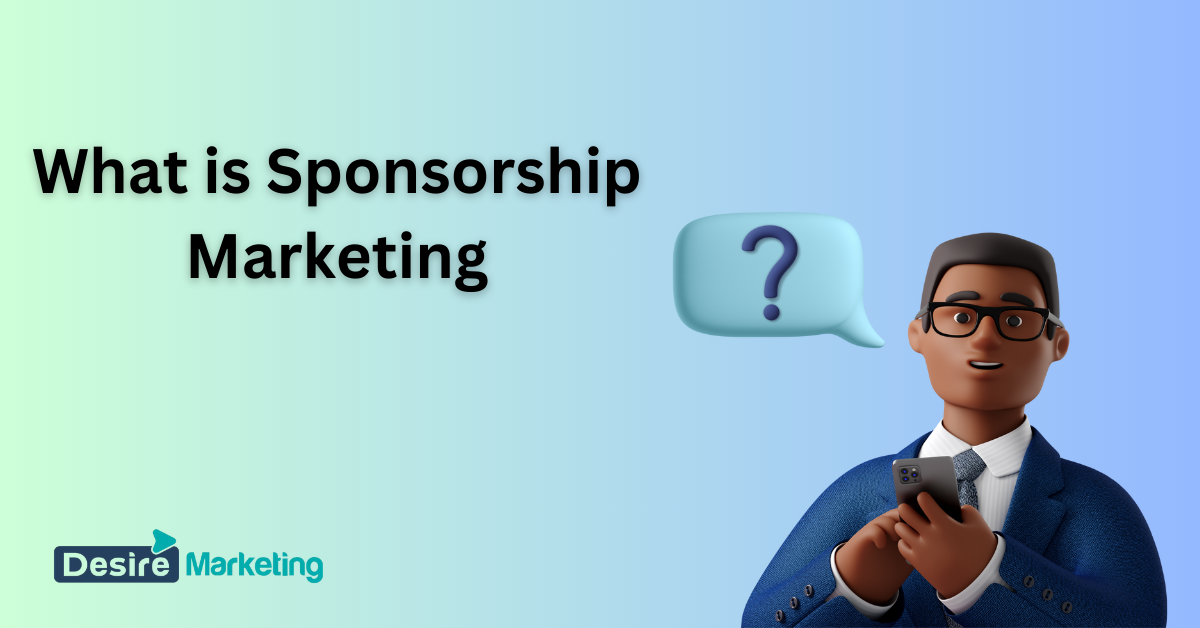
Sponsorship marketing involves partnering with an event, activity, team, or organization to mutual benefit. The sponsor provides financial and/or in-kind resources to support the event and build deeper associations with its audiences and participants.
In return sponsors receive promotional visibility, brand awareness, hospitality opportunities, social media access, and more exposure for their support. It differs from advertising campaigns directly highlighting specific products in order to drive immediate conversions.
Instead sponsorship marketing focuses on subtly connecting your brand with experiences potential customers are invested in. This positively enhances perception, allowing for customer acquisition and sales downstream versus hard sales tactics.
Some examples of sponsorship marketing include:
Sporting Events – Local 5K runs, youth sports teams/leagues, major championships
Festivals & Fairs – Cultural events, food festivals, educational activities
Arts Organizations – Theaters, performance venues, museums, galleries
Charities – Fundraisers, awareness campaigns, community events
Whether a concert series sponsor or surplus food vendor for a fair, placements allow sponsors to increase visibility and goodwill with audiences excited to engage. It shows your brand actively creating value versus interrupting it.
Carefully aligning with groups your customers care about builds crucial awareness and trust as a starting point to future business relationships.
Types of Sponsorships
There are a few main types of sponsorships to leverage for growth depending on what resources you can provide and how involved you aim to be. The levels cater to all business scales and goals.
Financial Sponsorships
The most straightforward sponsorship type is providing money to events and organizations. Cash sponsorships give flexibility for recipients to use funds however most useful like operational costs, vendors, production, talent, and more.
Sponsors gain visibility in return through branding, advertising, hospitality opportunities, and association with causes customers care about. Levels often dictate placement amount and prominence.
Common Financial Sponsorship Levels
- Title Sponsors
- Presenting Sponsors
- Series Sponsors
- Category Exclusives
- Supporting Sponsors
Higher sponsorship tiers get prime logo integrations, packaging rights, branded zones on site, media inclusion and so on. Brands across every industry from CPG to tech leverage financial sponsorships of relevant experiences for awareness and lead gen.
For example, a cloud software company may pay to sponsor the registration area, lanyards, and lunch break of a major tech conference putting their brand directly in front of decision-makers.
In-Kind Sponsorships
In-kind sponsorships involve providing products, services, or other non-cash assets to support events and strategic partners. This allows brands of all sizes to leverage what they already have access to for mutually beneficial arrangements.
Common in-kind sponsorships include:
Venue Sponsorships – Hosting events at branded locations
Equipment/Gear – Providing necessary items for operations
Prizes & Giveaways – Products donated as raffle items
Catering/Beverages – Food and drink items
Printing & Signage – Banners, flyers, posters etc
Transportation Support – Shuttles, parking services
Operational Services – Security, data analytics to manage restaurant waste, rentals
For example, a hotel chain may provide free rooms for headliners and organizers at a music festival gaining hospitality listings and brand integration while the festival saves on lodging costs.
In-kind sponsorships work by trading access to your company’s assets and services to power events more smoothly while embedding your brand through necessity. Additionally, park management software can help with event management by simplifying ticketing, access control, guest engagement, and cashless payments, ensuring an improved attendee experience.
It enables deeper partnerships beyond simple logo slaps – becoming part of the fabric enabling success and you can incorporate trading courses to value these sponsorships.
Media & Promotional Sponsorships
Media and promotional sponsorships focus on leveraging advertising channels, influencers, brand ambassadors and multipliers to spread awareness of events. Rather than direct event support, the sponsorship values come from outside promotion.
Some examples include:
Social Media Support – Contests, hashtag campaigns, takeovers
Influencer Marketing – Sponsored influencer posts, stories, videos
Ambassador Programs – Providing promo codes, assets
Advertising – TV, radio, print, digital ads
Email Promotions – Dedicated emails, promotions, contests
Web Content – Guest articles, interviews, contributed videos
The key to media sponsorships is providing digital real estate, distribution power, and third party credibility for increased event visibility rather than direct operational assistance.
For example, a fashion brand may run an Instagram sweepstakes awarding sponsored festival tickets for user-generated street style posts. This gains attention while positioning the brand as a partner instead of an advertiser.
Promotional sponsorships rely more upon leveraging existing audiences while media sponsorships focus on new channels, but both build crucial visibility supporting partners. Including a branded certificate template as part of a campaign or giveaway can further reinforce partner identity and perceived value among participants.
Benefits of Sponsorship Marketing
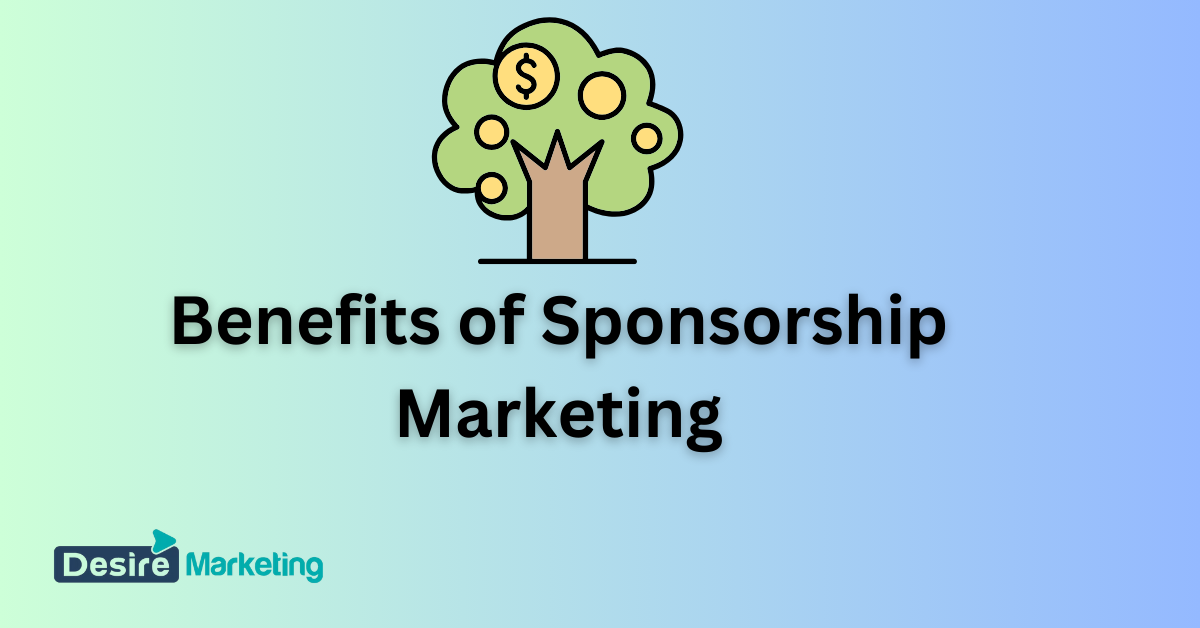
Now that you understand the major types of sponsorship opportunities, let’s explore the major advantages these partnerships offer compared to traditional advertising and promotion.
Increased Brand Visibility & Awareness
The most direct benefit comes from consistent brand visibility in front of new audiences and markets. Sponsor logos, presentation tags, on-site signage, hospitality areas, and other placements keep your company top of mind across every event touchpoint. Using web-to-print software can streamline the creation of branded materials for these placements, ensuring consistency and speed.
You gain millions of passive impressions from attendees as well as event coverage across media, social media, and participating influencers. Twitter hashtags, Instagram stories, live streams make your brand omnipresent and shareable to extended networks.
It associates you with experiences customers are invested in. Aggregate reach and frequency builds familiarity with your brand and offerings for future conversion.
Improved Consumer Perceptions
Rather than constant plugging of products, sponsorship marketing allows your brand to create value for potential customers. You enable and enhance events audiences are excited to engage with versus interrupting it.
This positioning makes your company appear more authentic, trustworthy, generous and customer-focused. Transferring those positive associations to what you sell downstream compared to competitors never sponsoring. It’s powerful social proof activating business growth.
Efficient Lead Generation Opportunities
Event sponsorships also offer direct lead generation opportunities beyond sheer impressions. Brand interaction zones allow sponsors to hold demonstrations, offer samples, collect contact info, send mailers and otherwise directly engage with the right audiences.
You can educate audiences for complex sales funnels in person versus cold outreach. Or quickly qualify interested prospects through games and giveaways to build email lists. Having captive visibility speeds conversion rates compared to disruptive ads.
Boosted Sales Revenue
Between improved brand visibility and lead generation, sponsorship marketing gives a sales lift across short and long-term revenue growth. Attendee promos offer immediate sales spikes. But downstream brand affinity and familiarity secured pays continual dividends.
Post-event nostalgia also kicks in helping you stand out as customers reminiscence. They’ll associate your brand with positive memories gaining preference amidst future purchase deliberations across months and years to come.
Content Marketing Assets
Sponsorships also provide valuable content marketing fodder before, during, and after events. Promotional posts, insider perspectives, contributing expertise articles, recap thought leadership and more can come from collaboration.
User generated content from attendees also offers a wealth of real-time photos, videos, reviews and visuals to repurpose. This expands your reach while adding an authentic community layer to owned content plays.
Having anchors for regularly updating evergreen content gives your brand a perpetual stage. This fills top and middle of funnel needs customer want when investigating purchases in your niche.
Strong Return on Investment
Compared to skyrocketing digital advertising rates and fractured media budgets, sponsorship marketing offers control and concentrated exposure. You know exactly where your brand will appear and what audiences it will reach through strategic alignments.
Contrast spending months testing campaign permutations attempting to gain traction. Or worse, spending heavily only to find poor attribution from display spots. Targeted sponsorships grant premium visibility customers actually appreciate at events they care about alongside minimal waste.
Factor in media impressions, hospitality conversion, lead gen and sales lift against costs. Event sponsorship provides unmatched customer connectivity that pays dividends across months and years over most marketing channels for ROI. When executed consistently, it can also contribute to more predictable revenue by anchoring long-term brand awareness and customer engagement.
Now that you see the immense brand, reach and revenue potential sponsorships unlock, let’s cover finding the right opportunities for activation.
Finding & Evaluating Sponsorship Opportunities
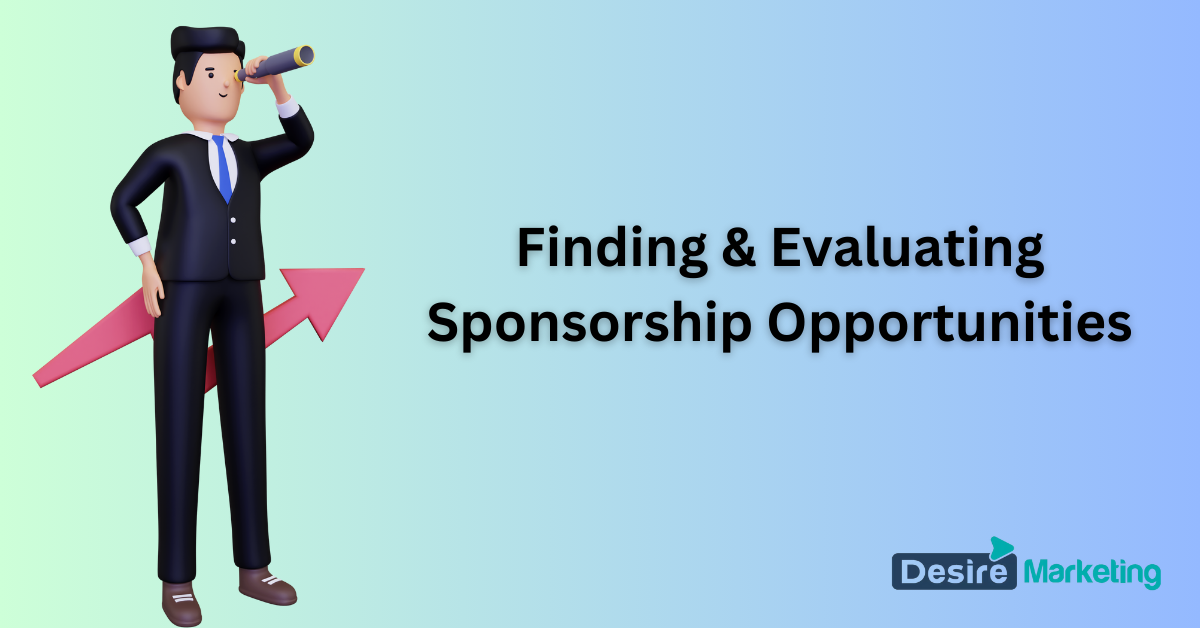
The key to successful sponsorship marketing is carefully researching and selecting partnerships truly aligned with your brand and target audiences. You want to ensure maximum visibility and conversion potential versus spraying budget hoping something sticks.
Research Target Events & Organizations
Start by making a list of conferences, causes, sports leagues and experiences you already know your customers actively engage in and care about. These sources can also inspire silent auction basket ideas that match your audience’s passions and drive more interest. These likely already have existing audiences excited to attend.
Check industry publications, local event calendars, dedicated interest forums and existing brand social media conversations to uncover more options. Look for growing momentum and good feedback hosting memorable experiences.
Vet Sponsorship Prospects
Once you have a list of sponsor-ready events or groups, vet them by reach, positioning and conversionability:
- Reach – Estimated or past attendee numbers, media pick-up and social amplification
- Positioning – Hospitality access, logo visibility, benefits conferred
- Conversion – Lead generation opportunities both on-site and downstream sales
Evaluate both quantitative impressions and awareness metrics as well as qualitative branding suitability. Compare packages at different investment tiers for the right fit.
Set Key Performance Indicators
Finally outlook benchmarks and key performance indicators to track effectiveness. Set measurable goals for direct sales, leads captured, social media growth, media mentions and brand search upticks connected to the sponsorship.
Having targets aligned to business objectives versus vague visibility provides accountability to optimize future sponsorships while proving true ROI beyond vanity metrics.
Now let’s get into bringing sponsored event partnerships to life successfully
Activating Sponsorship Marketing Plans
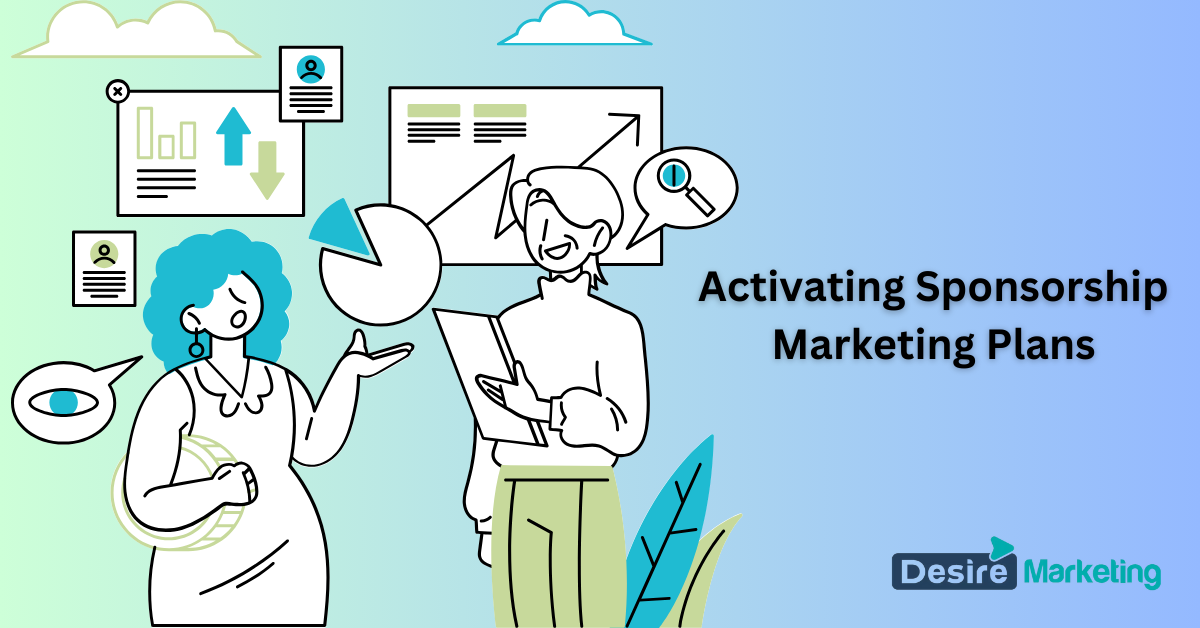
Once you’ve sealed the sponsorship agreement, you want to ensure you maximize its brand, lead generation and sales potential before, during and after aligned events through thoughtful activation.
Pre-Event Promotions
Start promoting your sponsorship 1-2 months prior to the event online and offline. Create social media posts spotlighting the collaboration for brand fans. Pitch media interviews about the partnership announcement. Make sure to dedicate time and effort to your pre-event promotions and include the strategies you want to to use in your event proposal template to ensure a well-structured approach.
Send dedicated email blasts to share exclusive giveaways, discounts, and teasers for attendees. Print signage and flyers to blanket local areas. Create free event flyers using an easy-to-use tool to effectively promote your event, ensuring consistent buzz while amplifying impressions and visibility.
Showcase Brand On-Site
During events, showcase your brand prominently across designed zones like lounges, charging stations or photobooths using signage, giveaways and experiential moments. A badge printing kiosk can be added to these zones, giving attendees a seamless way to print personalized badges while engaging with your brand in a memorable, interactive way. Have staff engage visitors to educate and capture lead intel through games or giveaways. You can use digital signage software to display content across all these zones from a single platform, ensuring seamless control and consistent branding.
Use hashtag feeds to monitor related social content. Respond conversationally while resharing owned and earned event media.
Steward Post-Event Relationships
Post-event is the crucial revenue realization stage. Follow-up immediately with leads captured via email automation funnels and phone to convert sign-ups while interest remains high. For restaurants that sponsor local events, leveraging a restaurant management system can help streamline post-event operations, track sales from promotions, and manage customer engagement efficiently.
Repurpose owned social media and contributor content across channels to extend impressions and search visibility. Remain conversational with attendees sharing memories and insider recaps.
Measure subkey performance indicators versus goals around traffic, conversions and sales tied to the sponsorship timeline. Identify strengths to integrate alongside areas needing adjustment to optimize future sponsorships.
Properly surrounding events with amplified visibility cultivates leads for hitting business growth goals through partnerships. Sculpt the customer journey before and after to maximize awareness into acquisition.
Conclusion
As opposed to disruptive advertising, sponsorship marketing allows you to strategically partner with experiences and organizations your customers genuinely care about. This builds crucial brand awareness, trust and sales revenue in the process.
Rather than a one-off tactic, truly integrated multi-channel activations before, during and after events pay dividends across months and years cementing positive associations. Memory-triggering nostalgia keeps your brand top of mind amidst future purchase decisions in your favor.
Carefully research target events and causes offering access to engaged audiences in environments where branding touchpoints can thrive. Compare packaged benefits to find the right sponsorship fit for business goals across reach, lead generation and hospitality conversion.
Wrap sponsorships in creative promotions and value-driven content spotlights across owned channels and external media. Steward new relationships post-event to realize the full revenue potential over both the short and long-term.
Properly executed sponsorship marketing delivers unmatched memorability impossible through traditional advertising. It embeds your brand directly within experiences potential customers adore rather than annoying them.
Are you ready to build strategic win-win partnerships strengthening brand growth and community relationships simultaneously? The right collaborations await to mutually support shared values and customers while accelerating success.
FAQ For Sponsorship Marketing
What types of events or organizations make good sponsorship opportunities?
Good sponsorship opportunities are events or groups that are closely aligned with your target audience and company values. This includes industry conferences, local events your customers attend, causes they care about, or activites they participate in.
What types of sponsorship benefits should I look for from events?
Look for event sponsorships that offer strong brand visibility through signage, logo placement, advertising, hospitality access, speaking opportunities, branded zones to engage attendees, media mentions etc. in their packaged offerings.
How can I generate leads from an event sponsorship?
You can generate leads on-site through giveaways, games, contests and other conversions asking for contact information in exchange for prizes. Having staff on hand to capture leads is key. Follow up post-event with automation funnels across email, SMS, phone to further convert sign-ups.
What goals and KPIs should I tie to event sponsorships?
Measure success through direct sales revenue, quality & quantity of leads captured, website traffic lift, social media growth and engagement, media mentions and online sentiment/reviews. Compare to non-sponsored periods to quantify impact.
When is the best time to promote my event sponsorship?
Begin promoting sponsorships across owned channels 1-2 months prior to amplification momentum and visibility. During and post event are also crucial windows helping continue engagement with events for sales conversions.
How do I make a sponsorship successful long-term?
Beyond the live event, steward relationships with attendee networks through social conversations, contributed content, and post-event offers. Remain a source of insider information and value. Use triggers like shared memories and recaps to stays top of mind for future purchase influence.
How do I offer a business service in-kind to events?
Analyze what operational elements events may need to be successful including equipment, signage production, transportation, catering, services etc. Offer contributions of these necessary elements displaying branding in return helping offset event costs.
